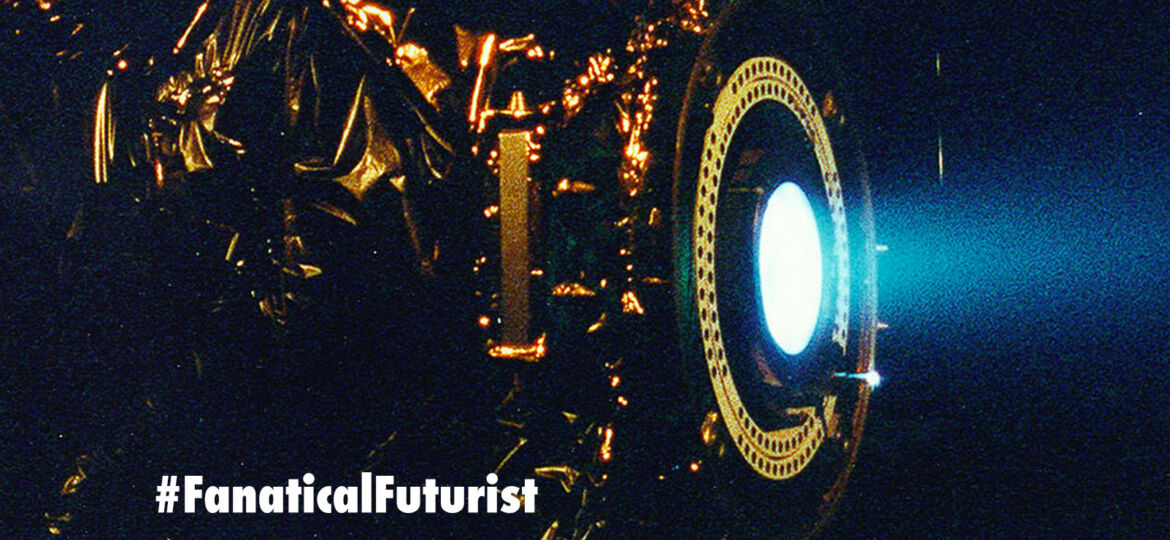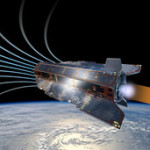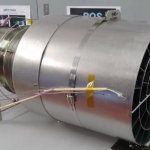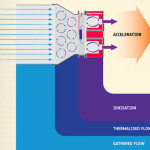
WHY THIS MATTERS IN BRIEF
When satellites and rockets burn all their fuel they inevitably fall back to Earth and crash, but what if they didn’t need to carry fuel in the first place? That would change the economics of space flight…
While ion thrusters are a promising propulsion method for future spacecraft, their working life is limited by the amount of propellant they can carry. Now, scientists at ESA and Italian space company SITAEL have test-fired a new type of “air-breathing” ion thruster that could keep satellites aloft for longer and reduce drag at the same time, by making them literally run on thin air.
The design is based on what’s known as a Hall thruster, which uses electric and magnetic fields to ionize gases, usually Xenon, before expelling these ions out the back to produce thrust. While the system is much cleaner, safer and more fuel efficient than traditional rockets, the thrust and acceleration produced isn’t quite as powerful.
Where they do excel though is in long term, slow burning applications. Spacecraft on their way to distant targets could take their time, firing up an electric thruster to accelerate over months or years. NASA recently test fired one of the most powerful ion thrusters ever built, the record breaking X3, which one day may carry humans to Mars, but the technology could also be put to work much closer to home.
After all, once they’re in orbit satellites don’t need anything too crazy, just something to keep them going steady. For example, the ESA’s Gravity field and steady-state Ocean Circulation Explorer (GOCE) satellite ran on an electric thruster for over four years, before its on board propellant reserves ran out and it burned up on re-entry in late 2013.
That built-in expiry date was the main issue the team wanted to tackle with the new design. Rather than carry a finite fuel source, the new thruster sucks in its fuel from the air around it. Once inside, these air molecules are compressed until they become thermalised ionized plasma, then they’re given an electric charge to accelerate them and ejected to provide thrust.
“This project began with a novel design to scoop up air molecules as propellant from the top of Earth’s atmosphere at around 200 km (124 mi) altitude with a typical speed of 7.8 km/s (4.8 mi/s),” says Louis Walpot, an ESA researcher on the project.
This kind of air-breathing electric thruster could allow satellites to remain active for far longer, but that’s not the only advantage. GOCE carried 40 kg (88 lb) of Xenon with it, so ditching that is a huge plus considering weight is such a valuable commodity on spacecraft. The older satellite also had a complex air drag reduction system built in, but the breathable new design doesn’t need one.
After extensive computer simulations, the team built a prototype and tested it at a SITAEL facility in Italy, in a vacuum chamber that mimicked the environment at an altitude of 200 km (124 mi). The incoming molecules were blasted towards the device by a particle flow generator.
The first test used the tried and true propellant Xenon to make sure the thruster could be repeatedly ignited, and once it nailed that the team then replaced some of the Xenon with a nitrogen oxygen air mixture.
“When the xenon based blue colour of the engine plume changed to purple, we knew we’d succeeded,” says Walpot, “finally, the system was ignited repeatedly solely with atmospheric propellant to prove the concept’s feasibility.”
The researchers say the new design could allow satellites to operate in very low orbits for long periods of time, and may eventually be adapted to work in the atmospheres of other planets like Mars.
“This result means air-breathing electric propulsion is no longer simply a theory but a tangible, working concept, ready to be developed, to serve one day as the basis of a new class of missions,” says Walpot.



















